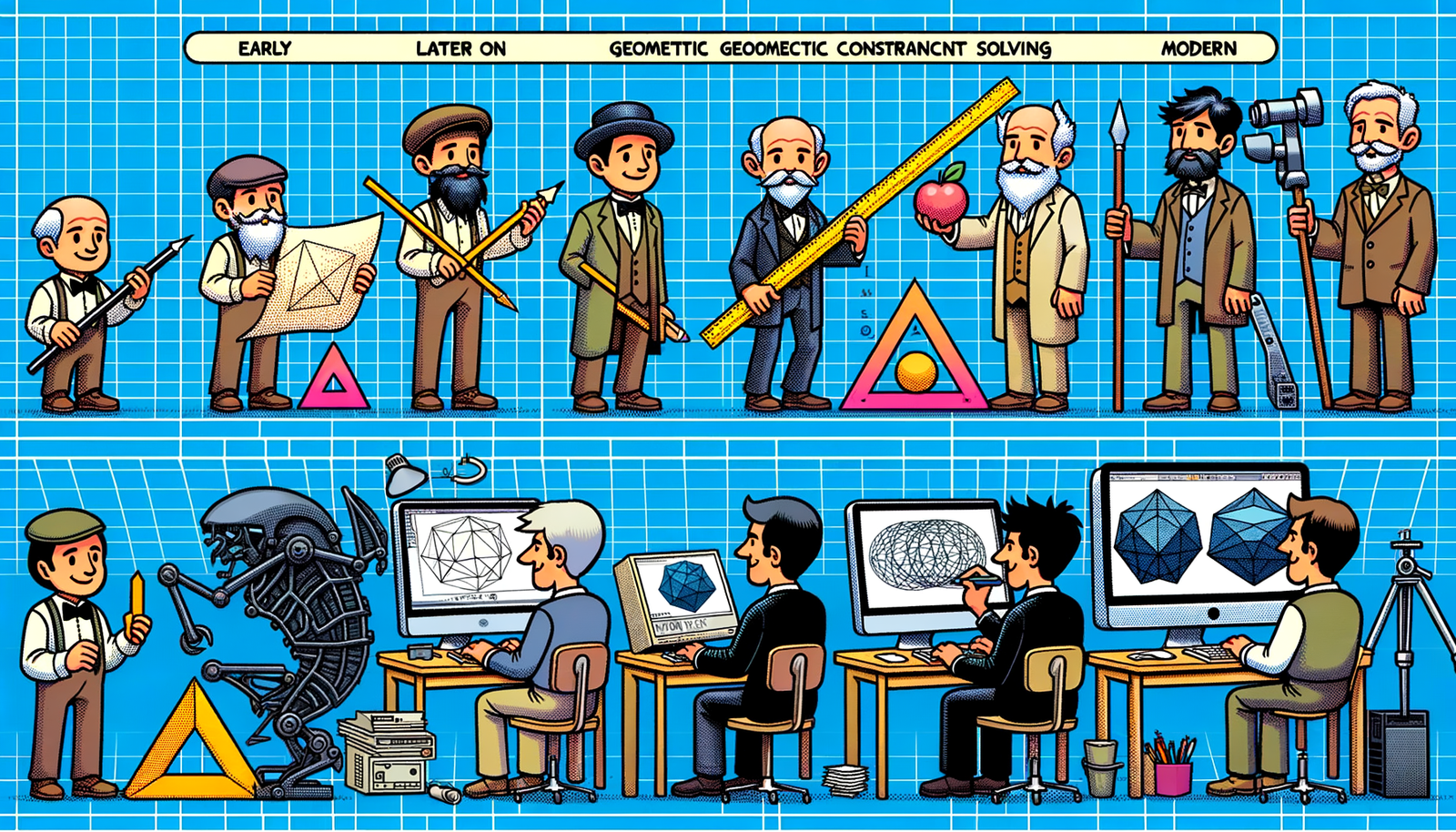Your Cart is Empty
Customer Testimonials
-
"Great customer service. The folks at Novedge were super helpful in navigating a somewhat complicated order including software upgrades and serial numbers in various stages of inactivity. They were friendly and helpful throughout the process.."
Ruben Ruckmark
"Quick & very helpful. We have been using Novedge for years and are very happy with their quick service when we need to make a purchase and excellent support resolving any issues."
Will Woodson
"Scott is the best. He reminds me about subscriptions dates, guides me in the correct direction for updates. He always responds promptly to me. He is literally the reason I continue to work with Novedge and will do so in the future."
Edward Mchugh
"Calvin Lok is “the man”. After my purchase of Sketchup 2021, he called me and provided step-by-step instructions to ease me through difficulties I was having with the setup of my new software."
Mike Borzage
Design Software History: Impact of Design Software Evolution on Aerospace Training: From CAD to AI and VR
June 24, 2024 4 min read


The field of aerospace training has undergone a remarkable transformation over the decades, evolving from rudimentary methods to sophisticated digital solutions. This evolution has been significantly driven by advancements in design software. In this article, we will delve into the history and impact of design software on the aerospace training sector, exploring key milestones and technological innovations that have shaped current practices and future trends.
The Evolution of Aerospace Training
Pre-Digital Training Methods
Before the digital revolution, aerospace training predominantly relied on traditional classroom-based learning and hands-on experience using physical simulators and mock-ups. This approach, while effective in many respects, had its limitations in terms of scalability, cost, and the ability to simulate complex scenarios.
- Traditional Classroom-Based Learning: Instructors provided theoretical knowledge through lectures, textbooks, and manual instructional materials.
- Physical Simulators and Mock-Ups: Trainees practiced on actual aircraft components or full-scale mock-ups, gaining hands-on experience in a controlled environment.
Introduction of Early Computer-Based Training (CBT)
The advent of Computer-Based Training (CBT) marked a significant shift in aerospace training methodologies. Early CBT systems utilized basic computer-aided instruction tools to augment traditional training. These initial software tools offered interactive tutorials, quizzes, and basic simulations, providing a more engaging learning experience.
Some key capabilities of early CBT systems included:
- Interactive multimedia content for enhanced learning engagement
- Basic simulations to replicate aerospace scenarios
- Automated assessments and feedback mechanisms
Key Milestones in Design Software for Aerospace Training
The Advent of CAD in Aerospace Training
The introduction of Computer-Aided Design (CAD) revolutionized aerospace training by providing highly detailed and accurate digital models of aircraft and components. Companies like Dassault Systèmes and Boeing were pioneers in integrating CAD models into their training modules. This allowed for more precise and comprehensive training programs that could simulate a wide array of scenarios and conditions.
Key benefits of CAD in aerospace training include:
- High-fidelity digital models that enhance understanding of complex systems
- Ability to simulate various operational scenarios and failure conditions
- Improved visualization and comprehension of intricate aerospace components
The Role of Virtual Reality (VR) and Augmented Reality (AR)
The advent of Virtual Reality (VR) and Augmented Reality (AR) has further transformed aerospace training by introducing immersive and interactive experiences. Companies like Lockheed Martin have been at the forefront of developing VR and AR applications for training purposes. These technologies enable trainees to engage in highly realistic simulations, enhancing their skills and operational readiness.
Benefits of using VR and AR in aerospace training include:
- Immersive training environments that replicate real-world conditions
- Interactive simulations that enhance skill acquisition and retention
- Reduced risks and costs associated with physical training
The Move Towards Cloud-Based Training Solutions
The shift to cloud-based training solutions has provided numerous advantages, including scalability, accessibility, and cost-effectiveness. Cloud platforms enable aerospace organizations to deliver training programs remotely, ensuring that personnel have access to up-to-date content and resources regardless of their location.
Notable cloud-based platforms and their industry adoption:
- Enhanced scalability and flexibility of training programs
- Real-time updates and content distribution
- Reduced infrastructure and maintenance costs
Technological Advances Driving Training Innovation
Real-Time Simulation and AI
Advancements in real-time simulation and Artificial Intelligence (AI) have significantly enhanced the capabilities of aerospace training programs. Simulation engines developed by companies like ANSYS and PTC enable realistic and dynamic training scenarios, while AI-powered adaptive learning systems provide personalized training experiences tailored to individual needs and performance levels.
Applications of real-time simulation and AI in training:
- High-fidelity simulations that replicate complex aerospace scenarios
- AI-driven adaptive learning paths for personalized training
- Continuous assessment and feedback for improved performance
Integration of IoT in Training Programs
The integration of the Internet of Things (IoT) into aerospace training programs has opened new avenues for real-time data collection, performance monitoring, and feedback. IoT-enabled devices can track various parameters during training sessions, providing valuable insights into trainee performance and equipment usage.
Examples of IoT applications in aerospace training:
- Real-time monitoring of trainee actions and responses
- Data-driven insights for optimizing training programs
- Enhanced maintenance training and operational readiness
Future Trends and Impact on the Aerospace Training Sector
Increased Adoption of Remote and Hybrid Training
The shift towards remote and hybrid training scenarios has become more pronounced, especially in the wake of the global pandemic. Aerospace organizations are increasingly adopting remote and hybrid training models to ensure continuity and accessibility. This shift has led to improvements in training efficiency and effectiveness, enabling personnel to receive high-quality training regardless of their geographical location.
The Role of Big Data and Analytics
The use of big data analytics in aerospace training has become a game-changer, allowing organizations to assess the effectiveness of their training programs and make data-driven decisions for continuous improvement. Predictive analytics, in particular, plays a crucial role in identifying potential areas of improvement and optimizing training methodologies.
Applications of big data and analytics in training:
- Assessment of training effectiveness through data analysis
- Predictive analytics for continuous improvement of programs
- Data-driven decision-making for optimal training strategies
Sustainability and Cost Reduction
Advanced design software has contributed significantly to cost-effective and sustainable training solutions in the aerospace sector. By leveraging digital technologies, organizations can reduce the need for physical resources, minimize waste, and lower training costs. This not only leads to financial savings but also aligns with sustainable practices and environmental goals.
Long-term impact on the aerospace industry:
- Reduced costs and resource consumption through digital training methods
- Enhanced sustainability and environmental responsibility
- Improved training outcomes and operational efficiency
In conclusion, the evolution of design software has had a profound impact on the aerospace training sector. From the early days of computer-based training to the latest advancements in VR, AR, AI, and IoT, technology has revolutionized the way aerospace professionals are trained. As we look to the future, continued innovation in design software will undoubtedly drive further improvements in training efficiency, effectiveness, and sustainability, ensuring that the aerospace industry remains at the forefront of technological progress.
Also in Design News

Bluebeam Tip: Maximize PDF Security and Efficiency with Bluebeam Revu's Flatten Tool
December 02, 2024 1 min read
Read More
Design Software History: Evolution and Impact of Geometric Constraint Solving in CAD History
December 02, 2024 2 min read
Read More
Rhino 3D Tip: Enhancing Scale Modeling Accuracy in Rhino 3D: Essential Tips for Designers and Engineers
December 02, 2024 2 min read
Read MoreSubscribe
Sign up to get the latest on sales, new releases and more …


